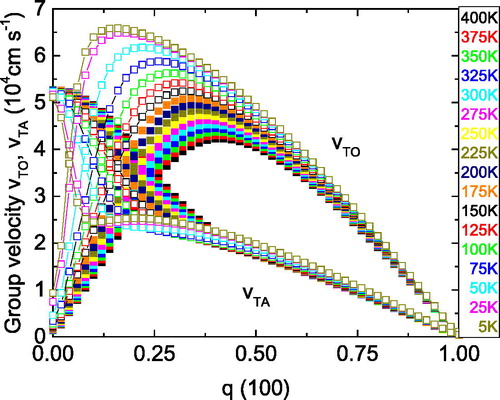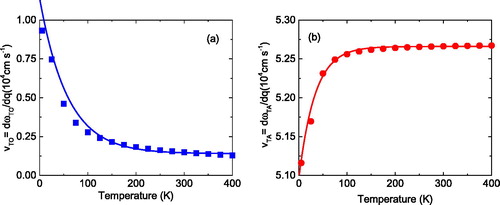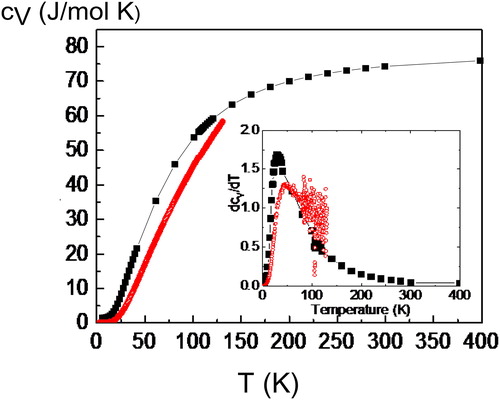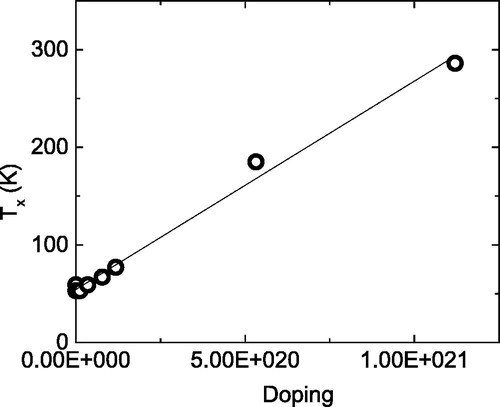Figures & data
Figure 1. (a) The phonon dispersion of the lowest transverse optic (squares) and acoustic (circles) modes of STO along (100) as a function of temperature; the inset to the figure shows the squared of the soft ferroelectric mode as a function of temperature (black line and symbols) in comparison to experimental data (blue and green stars) from Refs. [Citation49,Citation50]; (b) the difference between the transverse optic (TO) and transverse acoustic (TA) mode frequencies as a function of momentum q and temperature. The inset to this figured shows the phonon mean free path which is derived from the minimum in Δ(ω) = ωTO(q) − ωTA(q), where the inverse of the crossing momentum of optic and acoustic modes defines the mean free path
which is identical for both modes.
![Figure 1. (a) The phonon dispersion of the lowest transverse optic (squares) and acoustic (circles) modes of STO along (100) as a function of temperature; the inset to the figure shows the squared of the soft ferroelectric mode ωTO2(q=0) as a function of temperature (black line and symbols) in comparison to experimental data (blue and green stars) from Refs. [Citation49,Citation50]; (b) the difference between the transverse optic (TO) and transverse acoustic (TA) mode frequencies as a function of momentum q and temperature. The inset to this figured shows the phonon mean free path which is derived from the minimum in Δ(ω) = ωTO(q) − ωTA(q), where the inverse of the crossing momentum of optic and acoustic modes defines the mean free path lph which is identical for both modes.](/cms/asset/de839bb9-c2ff-43f8-8e2a-254b448689d3/gfer_a_1683492_f0001_c.jpg)
Figure 2. Group velocities of the optic vTO and the acoustic vTA modes as a function of momentum q and temperature.

Figure 3. (a) vTO in the limit q → 0 as a function of temperature, (b) the same as (a) but for vTA. The squares and circles refer to the calculations, the full lines are obtained from an exponential fit to the calculation. Note, that the scale of the y-axis is different in both figures.

Figure 4. The specific heat cV of STO as a function of temperature in comparison to experimental data (red open circles). The inset shows the derivative with respect to temperature of cV as a function of temperature again in comparison with the experimental data (red open circles).

Figure 5. TC as a function of temperature for STO shown on a double logarithmic scale. The experimental data of Ref. [Citation12] of STO are represented by the black squares. The theoretically obtained results are given by the red squares.
![Figure 5. TC as a function of temperature for STO shown on a double logarithmic scale. The experimental data of Ref. [Citation12] of STO are represented by the black squares. The theoretically obtained results are given by the red squares.](/cms/asset/deb6e552-2134-4a25-9f2b-3bac82db73f3/gfer_a_1683492_f0005_c.jpg)

